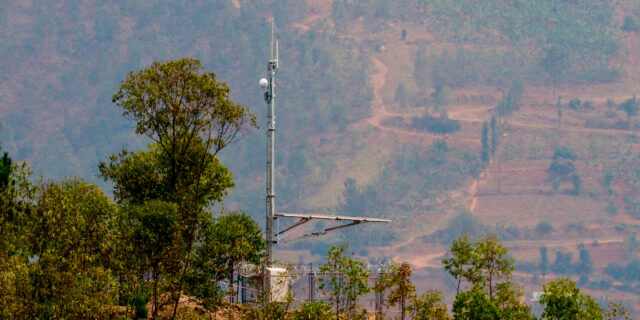
Cellular Suppression
Vanu’s cellular suppression solution prevents illicit cell phone use in correctional facilities and secure government compounds.
The Vanu, Inc. SpectrumShield™ cellular suppression network solution has been designed to prevent and manage illicit cell phone use in correctional facilities, secure government compounds, private sector spaces, and mobile cellular applications.
The SpectrumShield technology is a proven solution that has been successfully deployed to control illicit use of cellular phones in multiple U.S. correctional facilities.
As an example of the pervasive nature of the illegal cellphone problem, when the SpectrumShield solution was deployed within a state prison that housed a prison population of over 5,000 inmates, the system immediately identified and suppressed more than 3,200 illicit phones operating within the facility.
On July 18, 2013, Secretary of the California Department of Corrections and Rehabilitation, filed comments with the FCC lauding the performance of the Vanu technology:
“Since the managed access solution (MAS) was implemented at the first CDCR prison (Avenal State Prison in November 2012), more than 1.5 million attempts to use contraband cell phones were blocked as of June 30, 2013. These attempts were made on more than 5,100 different contraband cell phones, with more than 54,000 unique destination numbers.”
How it Works
SpectrumShield is a specialized application that combines proprietary Vanu multi-standard software defined radio technology for the RAN and Mobile Switching Center (MSC) core network functionality. SpectrumShield is designed to capture all mobiles in the targeted coverage area of a prison. The mobiles are divided into two groups: Unauthorized and Authorized. Unauthorized mobiles are retained in the SpectrumShield network. Authorized mobiles are redirected to their respective macro network carriers where they receive regular service.
SpectrumShield deploys base stations that mimic every standard that every carrier uses in every band. This can be easily more than 40 base stations per facility. However, leveraging software radio technology, this can all be run on a small number of servers as software base stations. Software radio leads to a much more cost effective, much smaller form factor solution for cellular suppression applications.
News & Insights
Vanu Partners with Digital Connect Infrastructure and Telecoms (DCIT) to Build Solar-Powered Mobile Network Sites in Nigeria

5th Mar
Partnering locally with Digital Connect Infrastructure and Telecoms Limited (DCIT) in Nigeria, Vanu will build mobile network sites...
Read article
K-NET Limited Deploys Vanu Mobile Network Infrastructure to Serve Off-Grid Communities in Liberia and Sierra Leone

4th Mar
K-NET Limited Deploys Vanu Mobile Network Infrastructure to Serve Off-Grid Communities in Liberia and Sierra Leone Vanu Partners...
Read article
Vanu and NuRAN work together to connect Marshall Islands

4th Mar
Vanu and NuRAN work together to connect Marshall Islands Lexington, MA, USA and New Delhi, India and Quebec,...
Read article
View All News